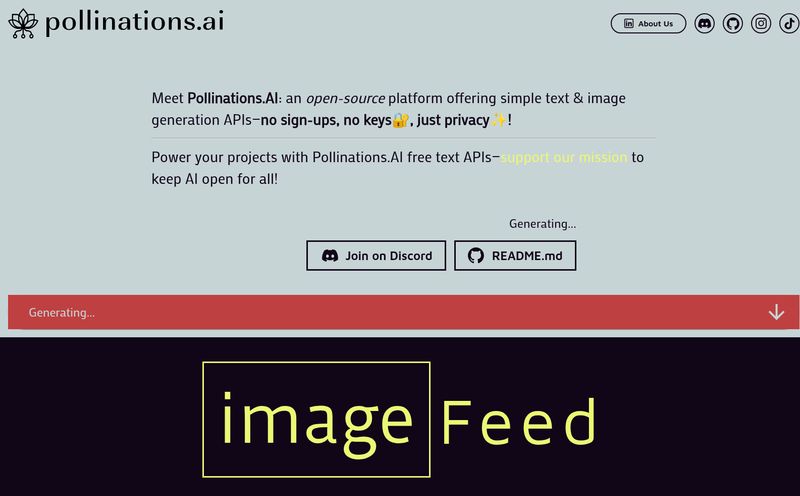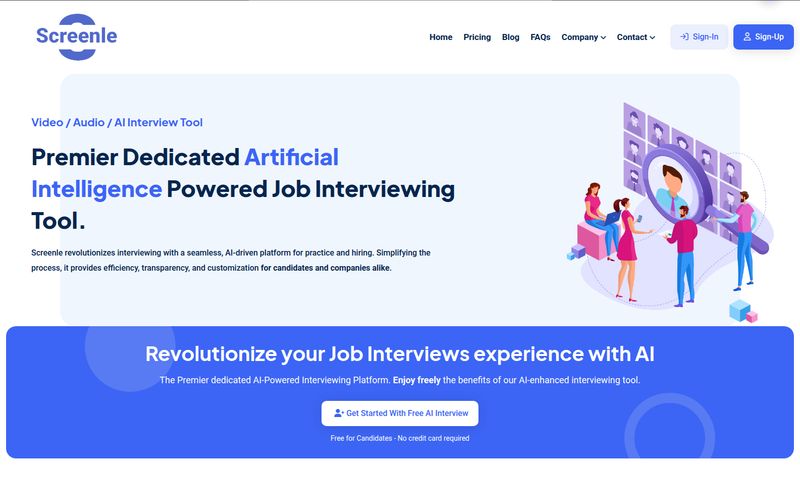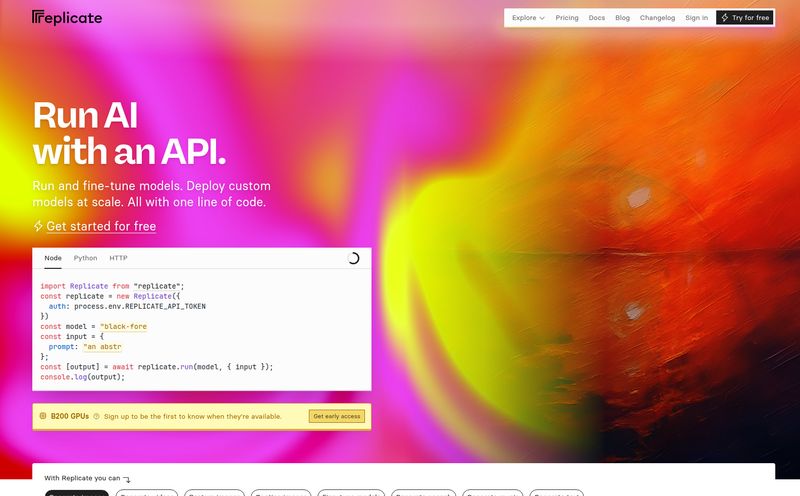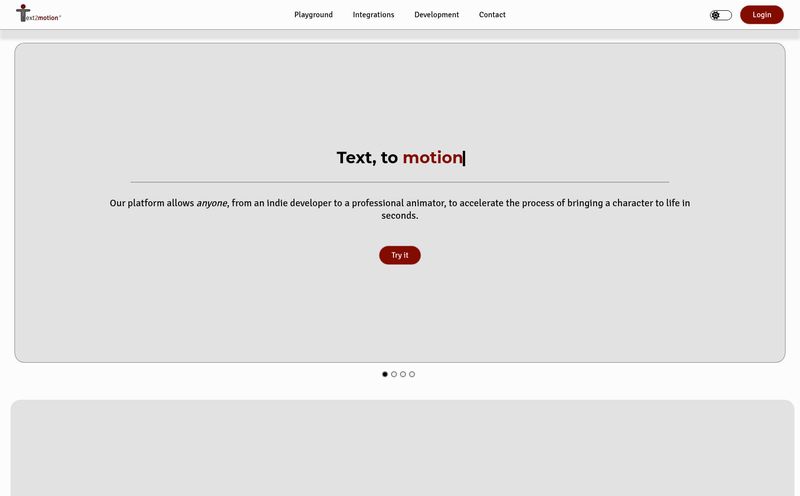I’ve been in the tech and SEO space for years, and let me tell you, I've seen a lot of tools promising to “revolutionize” our lives. Most of them are just fancy new ways to do the same old thing. Every so often, though, something comes along that makes me sit up and go, “Okay, wait a minute. This is different.”
That was my reaction to Binah.ai. The premise sounds like something straight out of Star Trek: just by looking into your smartphone's camera for about a minute, a platform can measure your vital signs. Not a prediction, not an estimate based on your activity, but a real-time measurement of your blood pressure, heart rate, oxygen saturation, and more.
It's the kind of tech that feels like it should be five, maybe ten years away. But it's here now, and it’s quietly making waves in some pretty huge industries. So, let’s get into it. Is this for real, or is it just more smoke and mirrors?
So, What Exactly is Binah.ai?
At its core, Binah.ai is an AI-powered Health Data Platform. Forget strapping on a cuff, clipping something to your finger or wearing a chest strap. This is 100% software. It uses a technology called remote photoplethysmography (rPPG). Big word, I know. In simple terms, it uses your device's camera to detect the tiny, invisible changes in the color of the skin on your face. These changes are caused by blood flowing through the vessels just beneath the surface. By analyzing that video feed, its AI can extract a whole host of health indicators.
And it's fast. We're talking a complete scan in 35 to 60 seconds. You just look at your phone, and it does the rest. For anyone who has ever wrestled with a blood pressure cuff, this sounds like pure magic.
How Does This Magic Actually Work?
The user experience is ridiculously simple. Imagine you're using an app that has Binah.ai's technology built in. You'd open it up, hit 'Start Scan,' and it would activate your front-facing camera. All you have to do is hold still and keep your face in the frame. That's it.
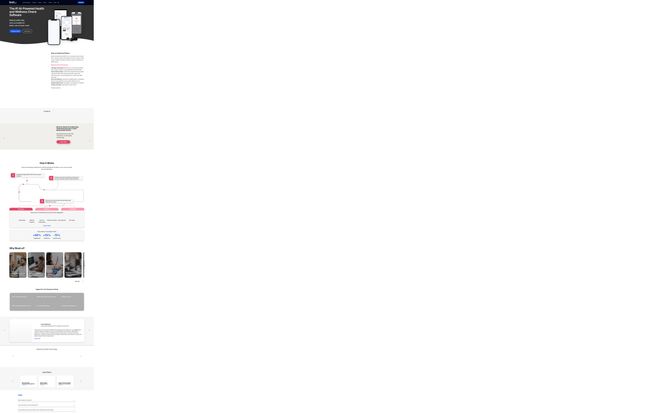
Visit Binah.ai
Behind the scenes, a cascade of complex processes is happening. The video stream is analyzed in real-time by sophisticated AI models. These algorithms are trained to filter out “noise”—like changes in room lighting or slight movements—and isolate that crucial rPPG signal. From that single signal, it can derive multiple vital signs simultaneously. It’s a masterclass in signal processing, turning a regular video feed into meaningful health data.
The Vital Signs You Can Track
This isn't just a simple heart rate tracker. The range of what Binah.ai can measure from a short video is genuinely impressive. We're talking about:
- Blood Pressure: This is the big one for me. Contactless blood pressure monitoring is a massive technical challenge, and they seem to be one of the few doing it commercially via video.
- Heart Rate: A staple of health tracking, but measured here with no physical contact.
- Heart Rate Variability (HRV): A fantastic indicator of stress and recovery that’s usually only available on high-end wearables. Getting this from a camera is huge for mental wellness applications.
- Oxygen Saturation (SpO2): Another metric that became a household name recently, measured without a pulse oximeter.
- Respiration Rate: Tracks your breaths per minute.
They also measure things like a Wellness Score, which is a composite score of your overall state, and even have research into things like hemoglobin levels. It's a comprehensive health snapshot in under a minute.
Who is This For? The Real-World Applications
You probably won't be downloading a Binah.ai app from the App Store for personal use. That's not their game. They are a B2B company, providing their technology as a Software Development Kit (SDK) for other businesses to integrate into their own platforms. And the potential use cases are staggering.
A Game-Changer for Telehealth and Healthcare
Think about a remote doctor's visit. Right now, it's mostly a conversation. But what if the doctor could say, “Okay, just hold your phone up for a minute,” and get a baseline set of vitals? It adds a critical layer of data to remote care, helping doctors make more informed decisions without the patient needing any special equipment at home. This supports more equitable access to care for people in remote areas or with mobility issues.
A New Angle for Insurance Companies
This is a big market for them. Insurance companies could integrate this tech into their apps for life and health insurance underwriting. Instead of sending a nurse to your house, they could get a quick wellness check remotely. They can also use it to power wellness programs, rewarding customers for regularly checking in on their health and maintaining a good wellness score.
Powering Corporate Wellness Programs
Many companies offer wellness platforms to help employees manage stress and stay healthy. Imagine an app that not only offers meditation guides but also allows you to measure your HRV to see if it’s actually working. It makes wellness tracking more tangible and data-driven, moving beyond just counting steps.
The Good, The Bad, and The... "Under Research"
Alright, no tool is perfect. As an SEO and tech analyst, I’m naturally skeptical. So let’s break down the realities.
The upsides are obvious and powerful. Being 100% software-based means it can be deployed on devices people already own, slashing hardware costs. The ease of integration via their SDK is a huge plus for developers. And their commitment to privacy, being GDPR-compliant, is absolutely critical. In the world of health data, that is non-negotiable.
However, there are real-world limitations to acknowledge. The technology's accuracy depends on certain conditions. You need decent, stable lighting (not too dark, not backlit). The user needs to hold relatively still, which can be a challenge for some. These aren't deal-breakers, but they are important factors for any company looking to deploy this. Also, it obviously requires a device with a camera, which, while common, isn't universal.
I also appreciate their honesty. On their site, they note that some features are still “under research.” This transparency is refreshing. It shows they are pushing the boundaries but aren’t over-promising on tech that isn’t fully baked yet.
Getting Under the Hood: The Binah.ai SDK
This is where the rubber meets the road for their business model. An SDK, or Software Development Kit, is essentially a toolkit that allows developers to plug Binah.ai's functionality directly into their own applications. So, an insurance company, a telehealth provider, or a wellness app doesn’t have to build this incredibly complex AI from scratch. They can license Binah's SDK and get it up and running within their existing ecosystem.
This is a smart play. It allows them to focus on what they do best—the core AI and signal processing—while enabling hundreds of other companies to innovate on top of their platform.
What About the Price Tag?
This is the million-dollar question, isn't it? As a B2B platform with an SDK, you won't find a simple pricing table with three tiers. This is enterprise software. I actually went looking for their pricing page, and you know where I ended up? A 404 page. A classic “you’ll have to call us” move, and honestly, I respect the hustle. It’s a clear signal that they’re selling value and solutions, not just a monthly subscription.
Pricing will almost certainly be based on a per-user, per-year license, or on the number of scans. If you're a business considering this, your best bet is to request a demo and have a conversation with their sales team. They'll need to understand your specific use case to put together a quote.
Frequently Asked Questions about Binah.ai
Is Binah.ai a medical device?
This is a key distinction. Binah.ai positions itself as a health and wellness monitoring tool, not a medical device. It's not intended to diagnose diseases or replace clinical-grade equipment. It's for wellness tracking and providing general health insights. Always consult a doctor for medical advice.
How accurate is the monitoring?
Binah.ai has published studies showing high correlation with medical-grade devices. However, as mentioned, the accuracy in a real-world setting can be influenced by factors like lighting conditions, the quality of the device's camera, and the user's ability to remain still during the scan.
Do I need any special hardware?
Nope. That's the beauty of it. It works with a wide range of existing smartphones, tablets, and laptops that have a standard camera. No extra gadgets required.
Is my personal health data safe?
Data privacy is a huge focus. The video stream processing can happen on the device itself, meaning the user's image doesn't necessarily have to be sent to the cloud. The platform is designed to be GDPR and HIPAA compliant, which are the gold standards for data privacy in Europe and the US respectively.
Can I download an app and use it for myself?
Not directly. Binah.ai provides its technology to other businesses. So, you might use their technology through your insurance provider's app or a corporate wellness app, but they don't offer a direct-to-consumer product at this time.
My Final Thoughts
After digging into Binah.ai, I'm genuinely excited. It's not just another incremental improvement on existing tech. It feels like a small leap forward. Turning the cameras we all carry into viable health monitoring tools has the potential to fundamentally change how we approach preventative care, remote health, and personal wellness.
It’s not perfect, and the real-world limitations are important to remember. But the technology is solid, the applications are clear, and they're being smart about their B2B approach. Binah.ai is a company to watch. They might just be building the future of accessible health data, one 60-second scan at a time.
Reference and Sources
- The official Binah.ai Website: https://www.binah.ai/
- Contact and Demo Request Page: https://www.binah.ai/contact/
- Further reading on rPPG technology from IEEE: A Review on Remote Photoplethysmography
